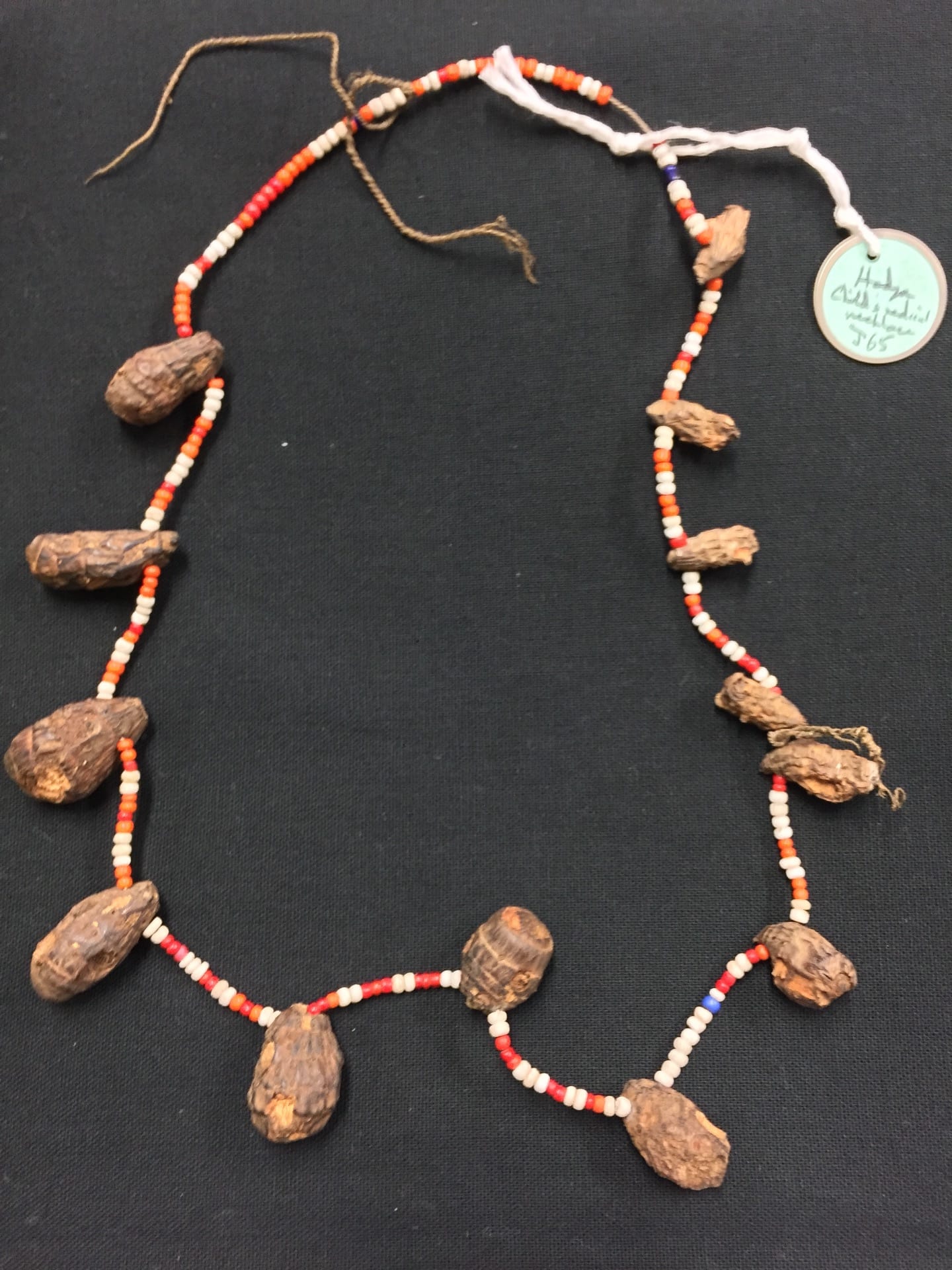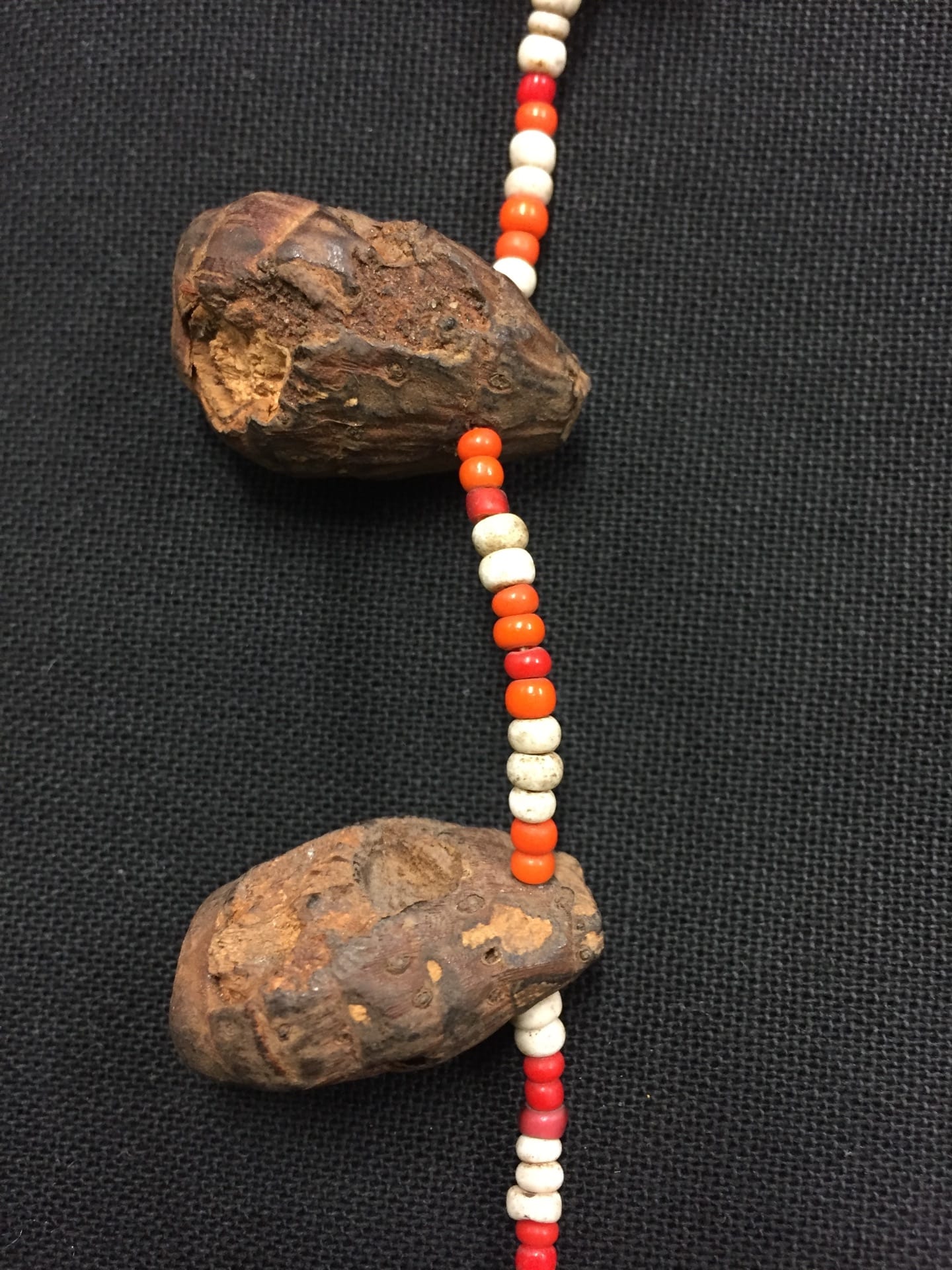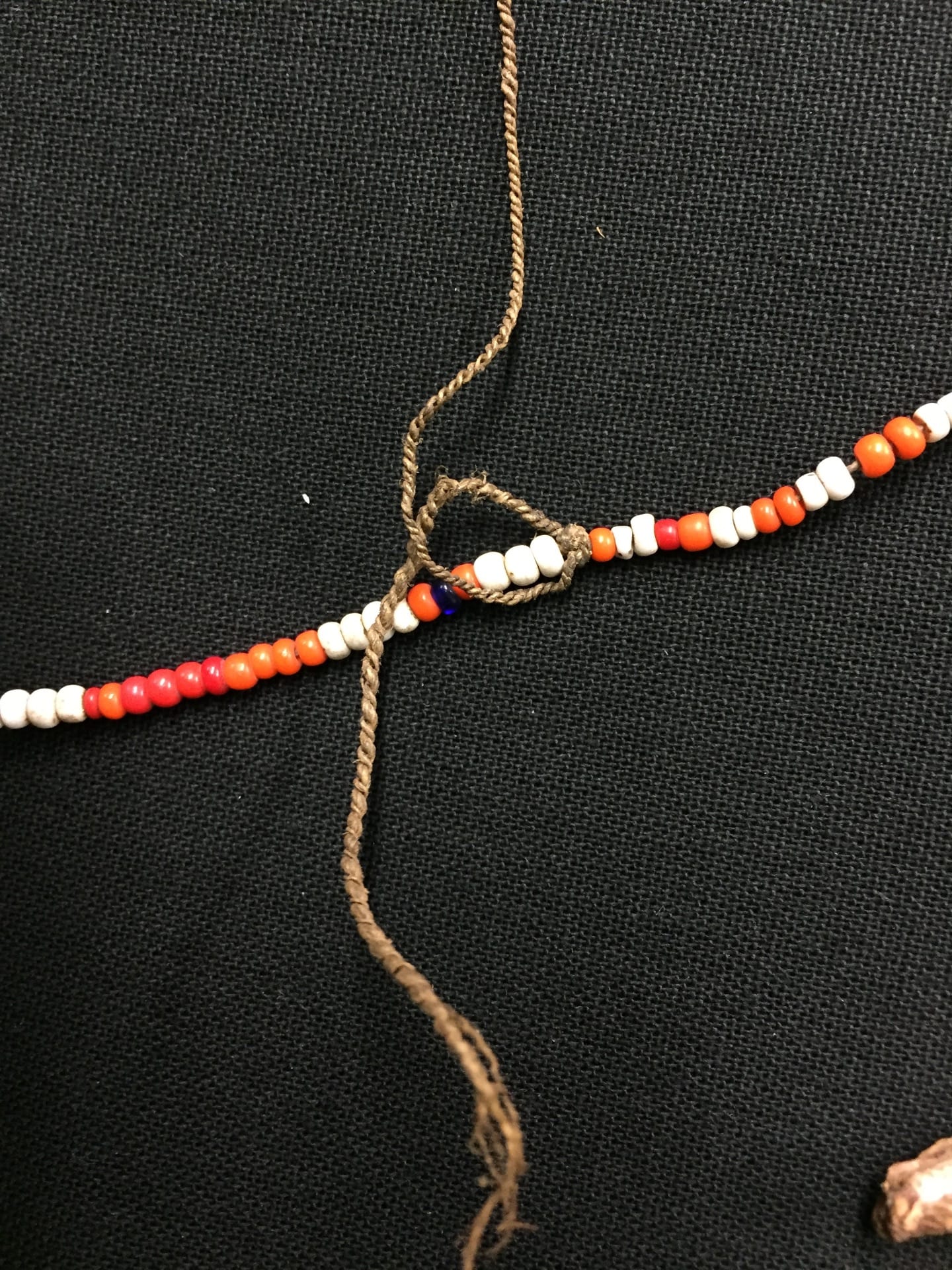[Last modified: March, 25 2019 12:29 AM]
Courtesy of UCL Ethnography Collection, Photos taken by Konstantina
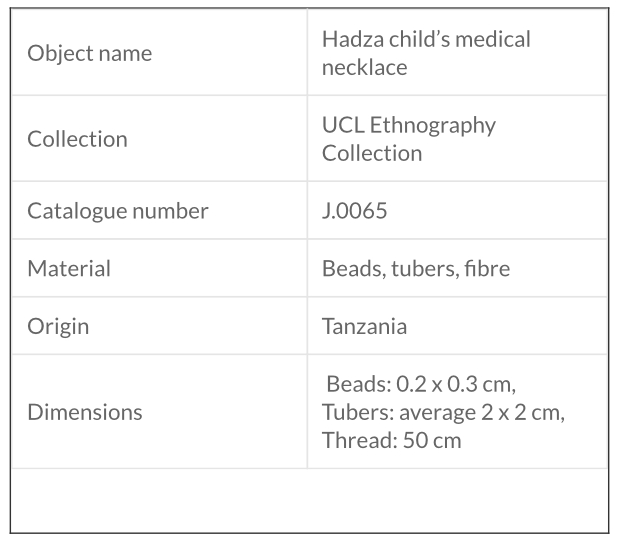
About
The necklace was probably made around the start of the 20th century by the Hadza hunter gatherers of Tanzania. It consists of three materials: beads, tubers and fibre. This type of beaded ornaments, and this specific one – Kelakugo- are very common in the Hadza society. Tubers are thought to have medical properties, and are often used as part of treatment of severe disease. They Kelakugo necklace is made to protect the wearer’s health, literally but also in the wider sense, from any possible sources of danger, e.g. getting lost in the wild. They are considered to be most effective for children, but adults can wear them as well.
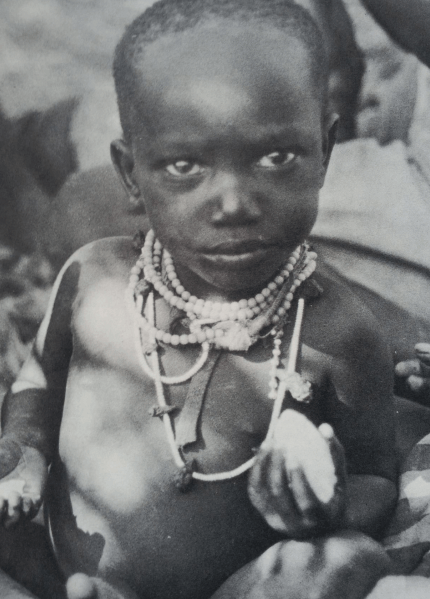
Photo of child wearing a necklace, (Woodburn, 1970)
Protection
This object is a physical mechanism of protection in Hadza culture, whose main value is the protection of the wearer. It is fair to say protection is a desirable quality in the Hadza community as all members, children and adults, venture out in the wild every day to hunt (men) or do foraging (women and kids). The object has also been protected itself; it has been distilled in time by being placed in an exhibition context, and physically preserved. The second knot on the necklace is evidence that it broke and got repaired, therefore it could be argued that it would not be very durable if it was not collected. Lastly, the object embodies, and in a way protects, the values of the makers regarding the significance of health and safety and the way objects play a role in that.
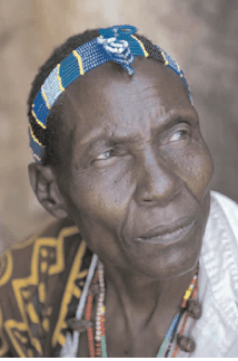
Photo of adult wearing a necklace, from: http://uclconversationsonconservation.blogspot.com/2016/04/kelaguko-hadza-child-medical-necklace.html
Want to know more?
The Making Process
The small beads are probably made of glass, and imported from the West; trade of beads between Europe and Africa was common in the last century. The tubers, a rhizome’s thickened part, are collected by Hadza women and kids by kneeling and using sticks. Lastly the thread is made by twisting natural fibre, probably extracted from a bark. The necklace is put together by Hadza women when they spend time with the children in the huts, while men hunt.
Photo of woman with kids, (https://www.hadzaexhibit.org)
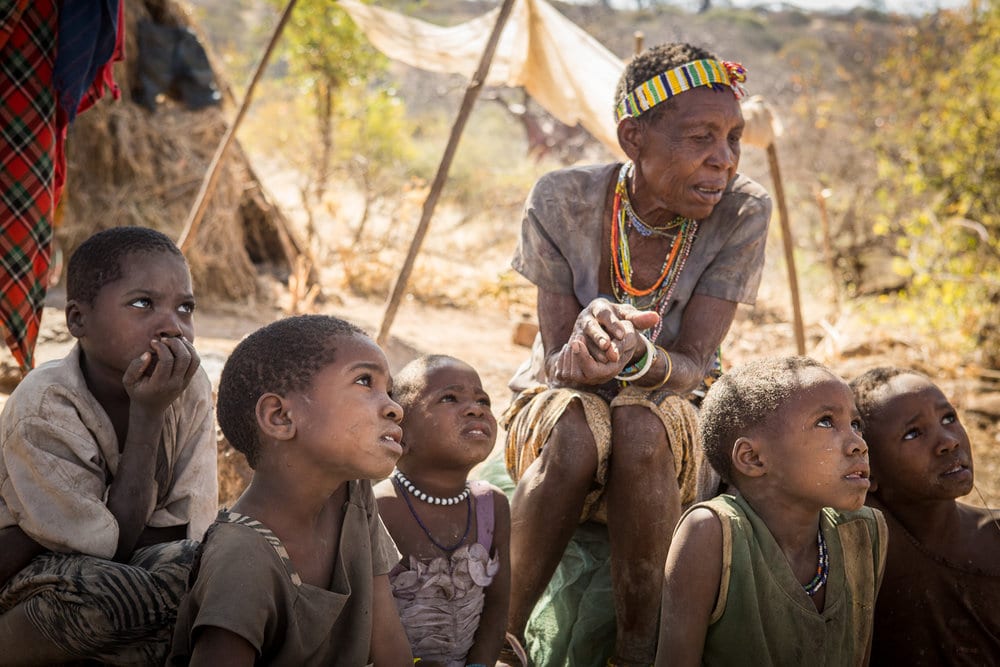
Similar Objects
The Ethnography necklace is only one of many Hadza objects that James Woodburn gave to London museums. To begin with, in 1962 the necklace was given to the Ethnography Collection alongside other 9 artifacts. In 1966, 79 Hadza artifacts were purchased by the Horniman Museum, one being a similar protective tuber medicinal necklace. Likewise, in 1970, 108 artifacts were sold to the British Museum, two of them being tuber medicinal necklaces. Here is an example of a similar necklace from the British Museum online catalogue. (https://www.britishmuseum.org/research/collection_online/search.aspx?searchText=James+Woodburn&p age=1)
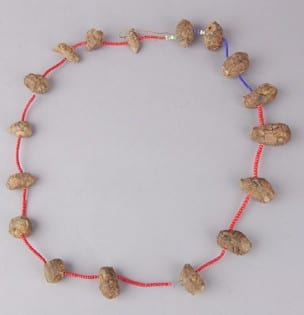
Further Reading
Agova, M. 2013. Editorial politics & significance assessment procedures: A comparative case study of two Hadza necklaces, Academia [online] Available at: http://ucl.academia.edu/MiaAgova [Accessed 9 Feb 2019]
Hudson, S. 2019. Hadza. [Film] Surrey: Journeyman Pictures. Available at: https://search.alexanderstreet.com/preview/work/bibliographic_entity%7Cvideo_work%7C2187750 [Accessed 8 February 2019]
Florian, M. et al. 1990. The Conservation of Artefacts Made from Plant Materials. Los Angeles: The GettyTrust. Princeton University Press.
Lamb, M.E. & B.S. Lewett 2017. Hunter-Gatherer Childhoods: Evolutionary, Developmental, and Cultural Perspectives (Evolutionary Foundations of Human Behavior Series). Oxon: Routledge.
Woodburn, J. 1970. Hunters And Gatherers:the material culture of the nomadic Hadza. London: British Museum.
Recommended Next:

